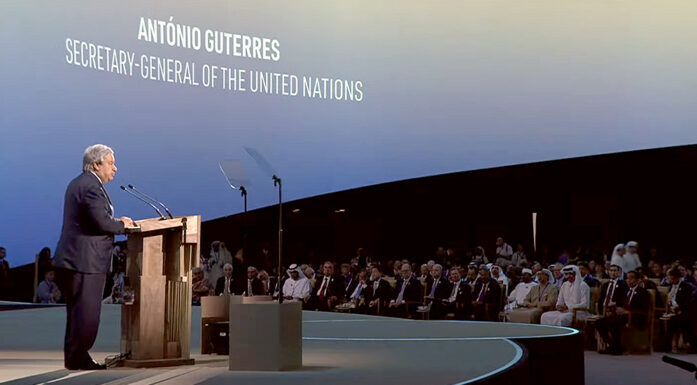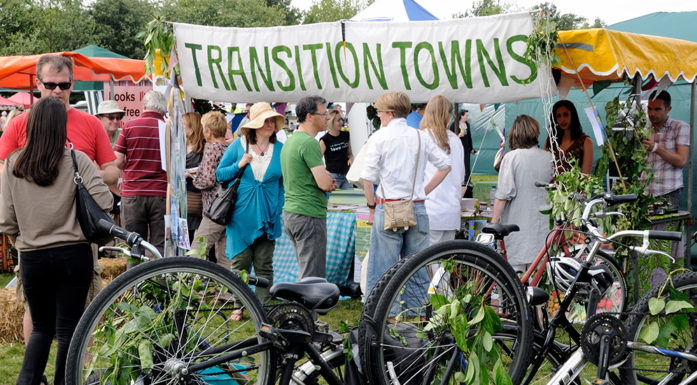Gloom and doom warnings about climate change do not work
How do you spread a message about climate change? According to an international study involving 59,000 participants, some tactics may actually reduce support.
If you want to spread a message about climate change and global warming, you need to adapt the message according to your intended audience and what you want to achieve.
Researchers have now developed an app to help people who want to spread their message on climate issues to ensure they generate the most support possible – be they researchers, politicians, decision makers or legislators.
Search the results yourself
The researchers have developed the Climate Intervention Webapp to help those who want to spread a climate message as best as possible.
This link will take you to the app, where you can search the results from 63 countries.
Huge survey involving 63 countries
59,000 people participated in surveys as part of the work on creating the app, and Norway was among the 63 countries involved. (You can read about what works best in Norway later in the article)
“The research team created this app that can help raise climate awareness and climate action globally. It is important to highlight messages that research shows are effective,” says Isabel Richter, Associate Professor at NTNU’s Department of Psychology.
In total, nearly 250 researchers were involved in the work of testing different climate messages and tactics. Richter was part of the research team along with colleagues Senior Researcher Stepan Vesely and Professor Christian Klöckner.
Previous studies have concentrated on checking attitudes towards individual measures. These might include recycling, use of public transport and energy-saving measures in the home. However, this study looked at a number of different variations. It also received answers from people all around the world, and not only Western, industrialised countries.
The researchers collected data between July 2022 and May 2023, so the figures are very recent. Both the app and the method behind it have now been published in Science Advances.
Multiple variations
The researchers exposed people to different variations of climate messages and tasks related to climate change. They then investigated their attitudes towards the different climate measures and other types of responses.
To measure how effective the methods were, they checked how willing the participants were to support different points of view and measures regarding climate change. For example, participants were asked whether they saw climate change as a serious threat, whether they supported a carbon tax on fossil energy, or whether they would plant trees themselves as part of the solution.
The researchers also tested whether participants were willing to share messages on social media, such as eating less meat in order to mitigate climate change.
Here are some of the results:
- INTIMIDATION: “Climate change poses a serious threat to humanity”.
All tactics increased the likelihood of people sharing the climate message on social media, and this doom and gloom messaging style was most effective, at least globally. However, sharing requires little effort from the person doing it. In some countries, scare tactics reduce support for reforestation, a real measure that requires more effort but may work. Scare tactics also reinforced the negative attitudes of people who are already climate sceptics.
- KNOWLEDGE: “99% of climate experts believe the planet is getting warmer and that climate change is primarily due to human activity”.
Some messages produce different results in different countries. This message, which appeals to the recipient’s sense of knowledge, increased support for climate measures in Romania by 9 per cent. In Canada, however, it reduced support by 5 per cent.
- EMOTIONS: Writing a letter to a child who is close to you about the climate measures we are taking today to make the planet a liveable place in 2055.
This tactic increased support for climate measures in Nigeria, Russia, Ghana, Brazil and the United States by between 5 and 10 per cent. However, in countries such as India, Serbia and the United Arab Emirates, it had little effect, or even reduced support slightly.
Other variations the researchers tested included presenting climate measures that have already been successfully implemented in the past, or portraying climate measures as patriotic or popular choices. Participants were also asked to imagine writing a letter to their future self telling them what type of climate measures they should have taken.

Writing a letter to future generations can influence attitudes. Illustration photo: Shutterstock, NTB
86 per cent believe climate change is a threat
Attitudes varied widely from country to country and depended on both demographics and beliefs. The researchers also divided people into groups according to their nationality, political ideology, age, gender, education, and income.
The results showed that 86 per cent of the participants believed that climate change poses a threat.
More than 70 per cent were supporters of systematic and collective measures to address climate change.
No point in using scare tactics in Norway
Gloom and doom messages about climate change do not work in Norway.
“Writing a letter to future generations is most effective in increasing political support for climate measures, and in increasing the belief that climate change is a problem. The second most effective measure is to say that almost all climate experts agree,” says Christian Klöckner, a professor at NTNU’s Department of Psychology.
Dire warnings and writing a letter to your future self were the least effective measures in Norway.
“All the alternatives made people in Norway less inclined to share a climate message on social media,” Richter added. That’s in complete contrast to the results seen globally.
However, people in Norway are quite eager to do something themselves, like planting trees. Here, it is most effective to focus on moral responsibility, the fact that many people acknowledge that climate change is a problem, and also that there is consensus among climate experts.
“The way that I choose to interpret it is that people in Norway like to do something concrete instead of just sharing things on social media,” Richter said.
Significant Norwegian contribution
Researchers from New York University and the University of Vienna led the study, but NTNU’s contribution was also significant.
“We were involved from the very beginning, developing possible interventions. We assessed intervention proposals from other partners, improved them in collaboration with the group and helped determine which interventions should actually be implemented,” Vesely said.
Vesely and Klöckner led and funded the Norwegian data collection.
Richter has good contacts in a number of African countries, which is a region of the world that is not always that easy to involve in these types of studies. She co-funded and participated in the collection of data from Kenya in particular.
Approximately 50 per cent of the Norwegian funding came from the Norwegian School of Economics (NHH). NHH also organised data collection through Ipsos.
Messages need to be adapted
Some activists believe that scare tactics are precisely what is needed in order for people to take action themselves. Others are of the opinion that it is depressing, demoralizing and counterproductive. The study supports both of these hypotheses, but it depends on what you want to achieve.
Scare tactics work if your main focus is on getting people to post about their support on social media, but the venting of anger and frustration on Facebook, TikTok or X doesn’t necessarily help the environment. If you want to gather support for things that may actually work, you need to use other means.
It is quite easy to get people to do things that do not require much effort, such as sharing a message on social media.
“Sharing something on social media can in itself feel like taking action. People may feel like ‘Now that I have done something, I can get on with my life’. This is behaviour with a very low threshold,” says Richter.
However, based on the results from around the world, none of the methods made people more willing to plant more trees for the sake of the environment – a measure that means people have to put an effort in themselves.
“The findings show that spreading a climate message depends on people’s attitudes towards climate change in the first place. Legislators and campaigners must adapt their messaging to the public,” says Madalina Vlasceanu, Assistant Professor at New York University and one of the people who led the research project.
Reference: Madalina Vlasceanu et al. Addressing climate change with behavioral science: A global intervention tournament in 63 countries. Sci. Adv.10,eadj5778(2024). DOI:10.1126/sciadv.adj5778







